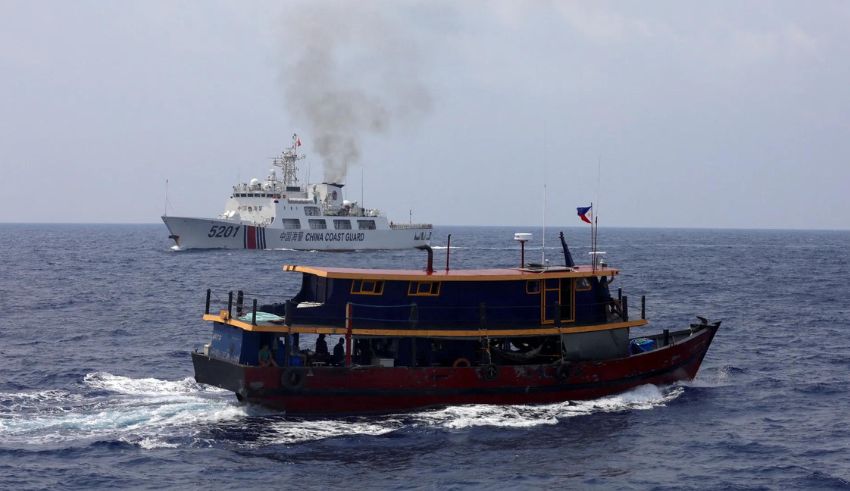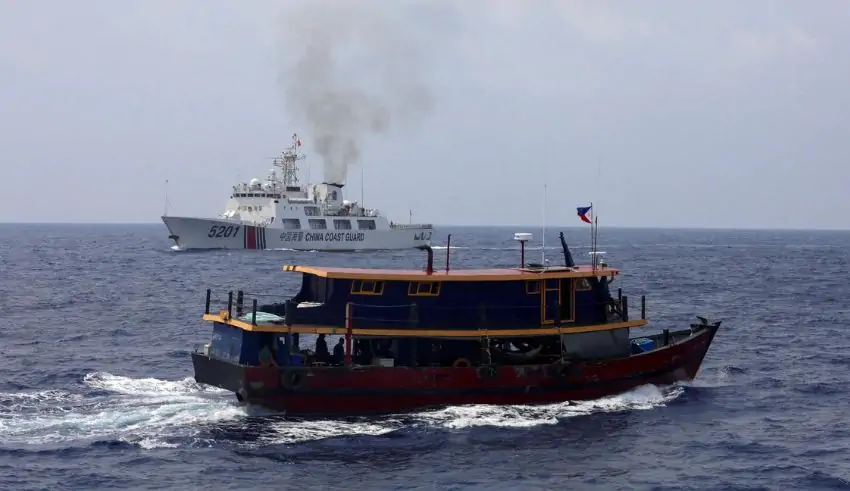

(C) Al Jazeera
The South China Sea is a vast and strategic body of water, rich in natural resources, such as oil, gas, fish, and minerals. The South China Sea is also a source of conflict and tension, as several countries claim overlapping sovereignty and jurisdiction over parts or all of it. China, in particular, claims almost the entire South China Sea, based on its historical rights and its nine-dash line map.
The Philippines is one of the countries that disputes China’s claims, and asserts its own rights and interests in the South China Sea, based on its geography, history, and international law. The Philippines occupies and controls several islands and features in the Spratly Islands and the Scarborough Shoal, which are also claimed by China and other countries. The Philippines also has an exclusive economic zone (EEZ) and a continental shelf in the South China Sea, where it has the sovereign rights to explore and exploit the natural resources.
The Philippines has been trying to tap the potential oil and gas resources in the South China Sea, especially in the Reed Bank, an underwater plateau that lies within its EEZ and is estimated to hold significant reserves of hydrocarbons. However, the Philippines has faced various challenges and obstacles in its exploration and development efforts, such as the lack of technical and financial capabilities, the opposition and harassment from China, and the legal and diplomatic complications.
The US and its partners, such as the European Union, Japan, Australia, and India, have expressed their support and assistance to the Philippines in its quest to tap the South China Sea resources, as part of their broader strategy to uphold the rules-based order and the freedom of navigation and overflight in the region. The US and its partners have also challenged and countered China’s assertive and aggressive actions in the South China Sea, such as the construction of artificial islands, the militarization of features, and the coercion of other claimants.
The US and its partners have offered to help the Philippines in various ways, such as:
– Providing technical and financial assistance: The US and its partners have offered to provide technical and financial assistance to the Philippines in its exploration and development of the oil and gas resources in the South China Sea, such as by conducting joint surveys, sharing data and expertise, and investing in projects. The US and its partners have also encouraged their companies to participate and partner with the Philippine companies in the energy sector.
– Enhancing security and defense cooperation: The US and its partners have enhanced their security and defense cooperation with the Philippines, such as by conducting joint exercises, patrols, and operations in the South China Sea, providing military equipment and training, and strengthening the mutual defense treaty and the visiting forces agreement. The US and its partners have also reaffirmed their commitment to defend the Philippines in case of an armed attack in the South China Sea.
– Supporting legal and diplomatic efforts: The US and its partners have supported the legal and diplomatic efforts of the Philippines in the South China Sea, such as by endorsing and implementing the 2016 arbitral ruling that invalidated China’s claims and upheld the Philippines’ rights, calling for the peaceful resolution of disputes and the adherence to international law, and facilitating the negotiations for a code of conduct and a joint development agreement between the Philippines and China.
The cooperation between the US and its partners and the Philippines in the South China Sea has opened up new opportunities and benefits for both sides, as well as for the region and the world. The cooperation has also created new challenges and risks, such as the possible escalation of tensions and conflicts with China, and the need for coordination and consultation among the stakeholders.
The cooperation between the US and its partners and the Philippines in the South China Sea has resulted in:
– Increased access and utilization of the natural resources: The cooperation has enabled the Philippines to access and utilize the natural resources in the South China Sea, which can enhance its energy security, economic development, and environmental protection. The cooperation has also enabled the US and its partners to share and benefit from the resources, which can diversify their energy sources, markets, and investments.
– Improved stability and security in the region: The cooperation has improved the stability and security in the region, by deterring and preventing China’s aggression and expansion, maintaining the balance of power and the freedom of navigation and overflight, and promoting the peaceful resolution of disputes and the respect for international law.
– Strengthened relations and partnerships among the allies: The cooperation has strengthened the relations and partnerships among the allies, by enhancing their mutual trust and understanding, aligning their interests and values, and increasing their cooperation and coordination in other areas, such as trade, development, health, and human rights.
The fifth prisoner exchange took place on 6 May 2025 between Russia and Ukraine involving 205 prisoners and it is…
Established in the year 1921 and it still continues to showcase the legacy of this game through generations. This ‘Emperor’s…
The NBA Playoffs of 2025 would have much perdition during the matches of the second round. In the East, the…
Jimmy O.Yang, the Asian standup comedian established his name in the international stage and he is more popular among the…
Bill Gates of the Bill & Melinda Gates Foundation declared during the Philanthropy Asia Summit on May 5, 2025 that…
The game changer of the Netflix streaming is the South Korean nail biting survival thriller web series “Squid Game” and…
This website uses cookies.
Read More